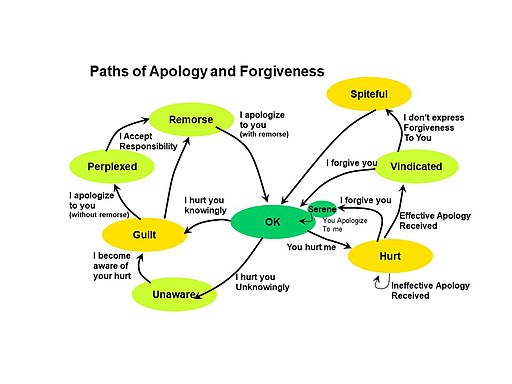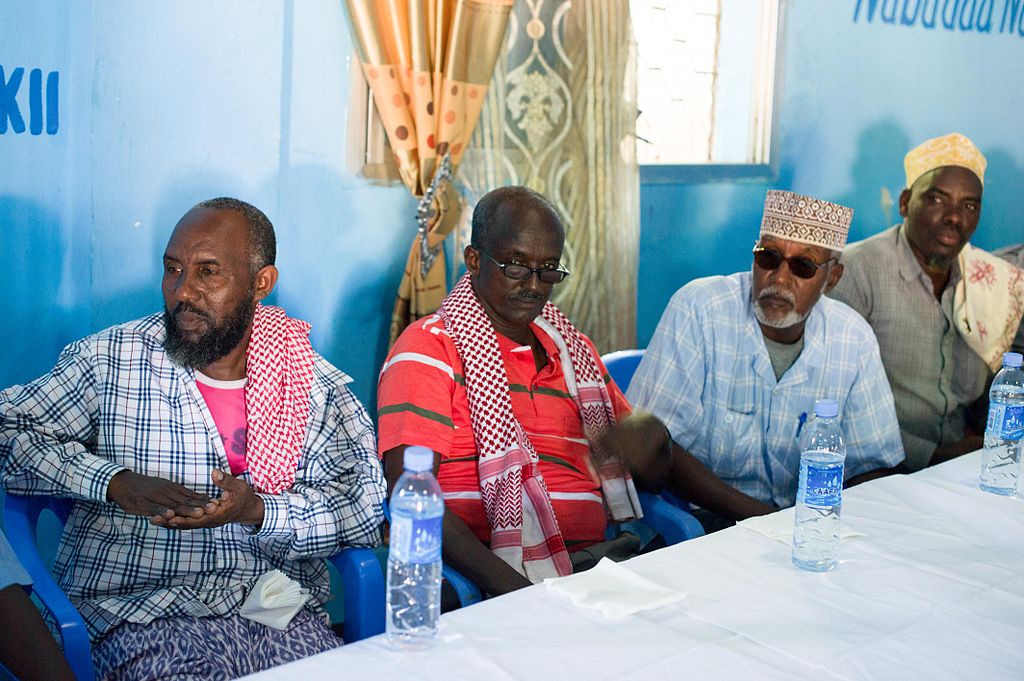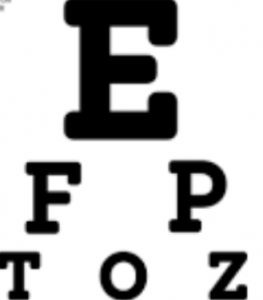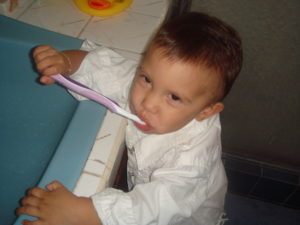We In the Middle Class Already Pay a Wealth Tax (A Call to Action)
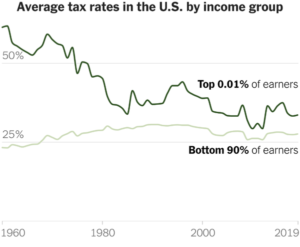
For most of us in the US who are neither super-wealthy nor desperately poor, our largest financial asset is our home. And we pay annual taxes on the worth of that asset–called property tax. Here in Massachusetts, we also pay annual excise taxes on our cars and certain other kinds of property. David Leonhardt of the New York Times explains this eloquently in today’s This Morning newsletter, with lots of charts and graphs to make the data more understandable. I strongly recommend this article.
But while those whose multiple lavish mansions represent only a tiny fraction of their financial worth also pay property taxes, most of their wealth is not taxed except that portion that arrives new each year (income).
Let’s not forget that when Dwight Eisenhower was president, the top federal marginal tax rate on income was astonishingly higher than it is now: 91 percent at the top end, until it was lowered during Lyndon Johnson’s first full year to 77 percent. It’s been lowered again several times, and now stands at 37 percent, according to the Tax Foundation. President Biden has proposed a slight increase, to 39.6 percent.
The effective rate is much lower, though. Only the amount of income above the threshold for that rate (currently $628,301) is taxed at that rate. Each portion of income is taxed at the bracket for that level. So if you file singly and make $700,000 (and I don’t come anywhere near that), only $71,699 is taxed at 37 percent. The first $9950 is taxed at just 10 percent, the next $30,575 is taxed at 12 percent, and so on. This is why it is often an advantage to file jointly with your spouse–because more of your money is taxed at the lower rates. In the above example, $19,900 would be taxed at the 10 percent level, versus $99,000 if you split the income evenly and each filed separately.
Having dropped the tax rate on the wealthiest income earners by about 60 percent, the government has been considerably less aggressive about making up the difference. The One Percent used to pay heavily in the year they acquired the money–but now that they’re paying much less, an asset tax could help fund the things we really want government to do: Clean up the planet, educate and protect all its citizenry, provide services and a leg up for the disempowered, and make sure no one is crushed by the ever-growing costs of basic survival. In other words, Build Back Better and the Green New Deal. Both of these will create massive numbers of new jobs, clean up the planet, and leave the average person with more money in their bank account.
Doing these things costs money. And that money comes from taxes and fees. 16 European countries with high standards of living and high quality of life have marginal tax rates between 45-56 percent. But look what they get for their money!
- Free or nearly-free health care
- Free college education
- Advanced support systems for elders, children, people with disabilities, and others in need (this is a long academic paper but it has a one-paragraph abstract)
- Far more paid vacation than most of us get in the US–five weeks, in many countries
- Extended paid family leave (8 to 86 weeks, depending on the country) for such things as welcoming a new baby or taking care of an elderly relative
- Perhaps not coincidentally, far greater energy efficiency and reduced carbon impact than the US–and a commitment to continue reducing fossil fuel use.
So Let’s Get It Done in the US, Already!
In our country, we are facing an absurd situation where two Democratic Senators representing less than three percent of the total population are holding America hostage. They say we can’t afford these investments, but they also shoot down all attempts to institute mechanisms to pay for them. And an even more absurd situation where most laws can only pass with a supermajority and virtually all Republican Senators refuse to vote for anything that the Democrats support. So much for the vaunted bipartisanship Senator Manchin in particular keeps insisting on. But the American people strongly support these investments.
It’s time to turn that support into action. First, write your Senators. You can find their addresses here. Use the appropriate sample letter (or letters, if you have one Senator in each party) from the three below as a model, but take three minutes to make it uniquely your own (especially the first sentence and the last three sentences), so it doesn’t look like a form letter. Better yet, write yur own, from scratch. If you live out-of-state, don’t lobby Manchin or Sinema directly. That will be counterproductive. Instead, reach out to friends, family members, people who are in the same organizations you participate in who do live in those states. If you are a business owner, start with “As a business owner and constituent in…”
Second, get involved. Do some phone banking or text banking or postcard writing. Show up when organizations like Fairvote, Movement Voter Project, Common Cause, voting rights divisions of NAACP and ACLU, and environmental groups hold rallies, lobbying days, meetings, and presentations. Personally contact your own friends and family. write letters to the editor for publication in your local newspaper. Be an election protection volunteer.
If you live in West Virginia or Arizona
Dear Senator,
As a constituent in [your town and state], I am deeply concerned at your role in blocking an agenda that most Americans support. 48 of your fellow Senate Democrats have shown incredible willingness to compromise with your demands–but you keep moving the goalposts. It is well past time for you to find a way to support these necessary Build Back Better, Green New Deal, and Voting Rights bills that will get the job done, give the Democrats something to brag about in next year’s crucial elections, and improve lives for all residents of our wonderful state. You will have another feather in your cap if you can bring these bills into law, even if it means getting them out from under the filibuster. But you will lose local support if you keep blocking the progress we so desperately need. I am eager to vote for a Senator who has put the needs of constituents ahead of narrow corporate and special interests. Please BE that Senator.
Sincerely,
[Your name and postal/email addresses]
If You Have One or Two Republican Senators
Dear Senator,
As a constituent in [your town and state], I am deeply concerned at your role in blocking an agenda that most Americans support. President Biden came to you in a spirit of bipartisanship. Senators Manchin and Sinema came to you in a spirit of bipartisanship. 48 of your fellow Senators have shown incredible willingness to compromise with your demands–but you keep moving the goalposts. We citizens of [your state] did not elect you to be an obstacle to programs that we desperately need, just because it wasn’t the Republicans who proposed them. It is well past time for you to find a way to support necessary infrastructure that goes beyond roads and bridges, address the carbon crisis with job-creating green initiatives, and ensure that every citizen has the right to vote and have that vote counted. Please, let’s see you be a Senator who represents the entire state, not just narrow special interests and conspiracy theorists. You will lose local support if you keep blocking the progress we so desperately need. I will use my volunteer hours and my campaign contributions dollars to vote for a Senator or candidate who has put the needs of constituents ahead of narrow corporate and special interests. Please BE that Senator.
Sincerely,
[Your name and postal/email addresses]
If You Have One or Two Democratic Senators
Dear Senator,
As a constituent in [your town and state], I am deeply concerned at the lack of progress on an agenda that most Americans support: upgrading necessary infrastructure that goes beyond roads and bridges, addressing the carbon crisis with job-creating green initiatives, and ensuring that every citizen has the right to vote and have that vote counted. I appreciate that you and 47 of your fellow Senators have shown incredible willingness to compromise–but Senators Manchin and Sinema keep moving the goalposts farther backward and the Republicans are not even interested. We citizens of [your state] are counting on YOU to move those goal posts forward again, to convince those obstructionist Senators that they need to represent the entire state, not just narrow special interests and conspiracy theorists. If you can get them to stop blocking the progress our nation so desperately needs, I will eagerly use my volunteer hours and my campaign contributions dollars to support you as a Senator or candidate who has convinced the holdouts to put the needs of constituents ahead of narrow corporate and special interests. Please BE that Senator.
Sincerely,
[Your name and postal/email addresses]

